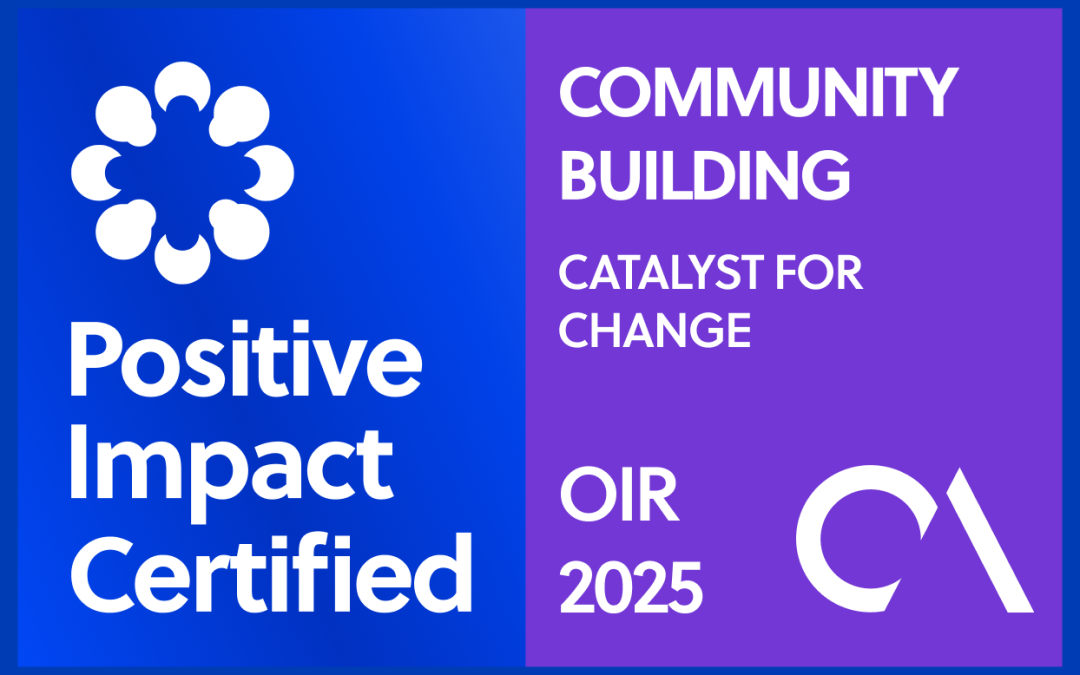
by Jordan Mulford | Oct 21, 2025 | Blog, Financial Services
When Demand Peaks, So Do Expectations
Every financial institution knows the rhythm of the calendar: tax deadlines, holiday shopping, and end-of-quarter closings all bring a surge of customer needs. During these financial peak seasons, banking support capacity is tested like never before. Transactions rise, call volumes spike, and customer patience shortens. In these high-demand situations, scalability is no longer optional, it’s the foundation of trust in modern banking.
When Capacity Fails, Trust Slips
Without scalable systems in place, high-demand seasons quickly reveal cracks in customer support. Longer wait times frustrate customers, inconsistent answers damage credibility, and service bottlenecks during holiday demand create lasting impressions. Customers may forgive small mistakes, but they rarely forget moments when their bank wasn’t there for them at scale. In a competitive industry, those gaps put loyalty and growth at risk.
What Customers Expect at Scale
Scaling isn’t just about adding more call center seats. Customers want service that grows with their needs, delivering:
- Proactive communication so customers know what to expect
- Omnichannel availability across chat, phone, and mobile for consistent answers.
- Compliance and security even under the pressure of peak volume.
How CBE Customer Solutions Scales Banking Support
CBE Customer Solutions specializes in helping financial institutions expand support capacity without sacrificing quality or compliance. Our scalable banking support model provides:
- Flexible staffing that grows quickly to absorb spikes in demand
- People-first agents who combine empathy with precision under pressure
- Omnichannel delivery that ensures seamless experiences across every touch point.
- Built in compliance that safeguards sensitive financial interactions
By combining agility with consistency, CBE transforms banking support from reactive to future-ready.
Scalability as a Competitive Edge
Busy seasons don’t just test banking support, they reveal which institutions are built to scale. With the right partner, financial peak seasons can become opportunities to showcase reliability, strengthen customer loyalty, and prove your platform is ready for growth.
CBE Customer Solutions helps banks and financial institutions meet high-demand seasons with scalable, compliant, and customer-first support. Together, we turn peak season pressure into a decisive competitive advantage.

by Jordan Mulford | Oct 17, 2025 | Press Release
Cedar Falls, IA – October 17, 2025 – CBE Customer Solutions is honored to be recognized as one of 31 winners in the Outsourcing Impact Review (OIR) 2025 Awards, presented by Outsource Accelerator (OA). The company’s impactful initiative, CBE Cares, has been celebrated for its significant contribution to advancing positive change and innovation across the global outsourcing industry.
Celebrating purpose-driven outsourcing
Now in its third year, the OIR 2025 Awards spotlights organizations that exemplify leadership in sustainability, community empowerment, and social innovation. CBE Customer Solutions’ CBE Cares initiative stood out for its meaningful results in the Community Building category – demonstrating how outsourcing can be a force for good through consistent investment in people and purpose.
Through programs such as the Employee Community Outreach Program (ECOP), Partners in Education, and a longstanding United Way Partnership, CBE empowers employees to take an active role in identifying and supporting causes that matter most to them. Each initiative is grassroots and employee-voted, ensuring that CBE’s impact remains timely, relevant, and deeply personal to local needs across Iowa, Tennessee, Texas, and the Philippines.
In 2024 alone, CBE employees raised over $68,000 for United Way campaigns, donated over $45,000 through ECOP to 12 community organizations, supported more than 1,300 students with school supplies through Partners in Education, and dedicated over 120 volunteer hours to community projects.
“CBE Cares represents the heart of who we are as a company,” said Erica Parks, President and CEO of CBE Customer Solutions. “It reflects our belief that when people are empowered to give back, real transformation happens within our communities and within ourselves. This recognition from Outsource Accelerator reinforces our commitment to people, purpose, and partnership.”
Featured in the OIR 2025 Report
As one of this year’s 31 winners, CBE Customer Solutions is featured in the Outsourcing Impact Review 2025 Report, launched globally on October 17, 2025. This annual publication recognizes the most pioneering social impact initiatives led by outsourcing firms worldwide, spanning community development, education, health, and inclusion.
“The 2025 OIR Awards and Report serve as a testament to the growing role of the outsourcing industry in global sustainability efforts,” Derek Gallimore, Chief Executive Officer (CEO) of Outsource Accelerator, commented. “Companies are not only redefining the outsourcing model but are also transforming how businesses across industries can contribute to positive social change. This report highlights their leadership in addressing pressing global challenges and serving the community.”
About the OIR 2025
The Outsourcing Impact Review (OIR) is an annual global study developed by Outsource Accelerator, the world’s leading outsourcing marketplace and advisory. The OIR Awards celebrate companies whose initiatives redefine what outsourcing can achieve by driving social impact, sustainability, and ethical business practices. Now in its third edition, the 2025 review features 31 trailblazing winners from around the world who are shaping the future of responsible outsourcing.
Learn more
Discover more about CBE Customer Solutions’ CBE Cares initiative and its ongoing commitment to ethical and impactful outsourcing at https://www.cbecustomersolutions.com/cbe-cares/ or contact:
Media Contact:
Casey Cipoletti
VP, Marketing
casey.cipoletti@cbecompanies.com
319-427-4508
View all 2025 winners and the OIR Report at https://impact.outsourceaccelerator.com
About CBE Customer Solutions
CBE Customer Solutions, a division of CBE Companies, delivers customer experience outsourcing solutions that help clients achieve operational excellence, maintain brand integrity, and enhance customer loyalty. With decades of experience supporting highly regulated industries, CBE combines secure, compliance, and culture-aligned service delivery with a deep commitment to people and purpose. Learn more at https://cbecustomersolutions.com/.
About Outsource Accelerator
Outsource Accelerator (OA) is the world’s trusted source of independent information, advisory, and expert implementation of outsourcing. We offer the world’s leading aggregator marketplace for outsourcing. It specifically provides the conduit between world-leading outsourcing suppliers and businesses – clients – across the globe. Our website has over 5,000 articles, 500+ podcast episodes, and a comprehensive directory with 4,000+ BPO companies which are all designed to make it easier for clients to learn about and engage with outsourcing. www.outsourceaccelerator.com

by Jordan Mulford | Oct 14, 2025 | Blog, Utilities
Powering More Than Electricity
Smart grids aren’t just modernizing how utilities deliver energy, they’re redefining what customers expect from their providers. With technology driving efficiency and sustainability, customers now anticipate the same level of responsiveness and clarity from their utility companies that they receive from tech-driven industries. If the customer experience lags, even the smartest grid will struggle to earn long-term trust.
Where Traditional Utility Support Falls Short
For decades, utility support has been reactive: long wait times, inconsistent communication, and limited channels for customers to get answers. In a smart grid environment, those gaps are amplified. Customers who rely on real-time updates about outages, billing, or energy efficiency expect fast, accurate, and seamless support.
- Long hold times erode customer confidence
- Inconsistent answers create frustration
- Lack of transparency leaves customers feeling undervalued
These aren’t just inconveniences, they directly affect customer loyalty at a time when choice and competition in the utility sector are expanding.
The Customer Expectation Shift in Smart Grids
As smart grids roll out, customers don’t just want reliable power. They expect:
- Proactive communication during outages or service changes.
- Omnichannel access to support across phone, chat, and mobile apps.
- Transparent billing and usage data that’s easy to understand.
- Security and compliance assurance for sensitive customer data.
Smart grid CX isn’t only about handling problems. It’s about turning every interaction into a moment that builds trust and loyalty.
Smarter CX as a Strategic Advantage
Utilities that embrace smarter CX aren’t just keeping up with technology, they’re using it to gain an edge. Future utility support means:
- Scaling support teams during peak events like storms or demand spikes.
- Leveraging automation and AI to provide faster, more accurate solutions.
- Training people-first agents who blend empathy with technical expertise.
- Embedding compliance into every interaction to protect reputations.
Handled well, customer support transforms from a cost center into a differentiator that strengthens loyalty and brand reputation.
How CBE Customer Solutions Future-Proofs Utilities CX
CBE Customer Solutions partners with utility providers to design support models that evolve with technology and customer needs. Our approach delivers:
- Flexible staffing models that expand seamlessly during outages or surges.
- Omnichannel service delivery that ensures customers get consistent answers wherever they reach out.
- Compliance-ready practices to safeguard customer trust and meet strict regulatory requirements.
- AI-enabled tools that improve speed and precision while keeping people at the center.
With CBE, utilities can adapt confidently to smart grid demands while ensuring every customer interaction is secure, consistent, and human-centered.
Turning Smart Grids Into Smarter Relationships
The smart grid revolution isn’t just about infrastructure, it’s about trust. Customers will remember how their utility provider showed up during moments of need, and they’ll stay loyal to providers who deliver clarity, consistency, and care.
CBE Customer Solutions helps utility providers future-proof their CX by blending people-first service, compliance excellence, and tech-enabled innovation. Together, we transform challenges into opportunities, ensuring utilities lead with trust in an ever-evolving energy landscape.

by Jordan Mulford | Oct 9, 2025 | Blog, EdTech
Confidence Behind Every Click
Learning platforms carry more than lessons, they carry personal information, financial details, and data about how students engage. That makes compliance in EdTech non-negotiable. A platform can only succeed if students, parents, and educators feel confident that privacy is protected and regulations are followed at every step.
The Risk of Getting it Wrong
EdTech companies that overlook compliance do more than risk penalties. They risk losing trust. When student data is mishandled or support teams aren’t trained on support regulations, the consequences are immediate:
- Parents hesitate to recommend the platform.
- Schools question long-term partnerships.
- Students lose confidence in the learning experience themselves.
In an industry built on progress, a single breach of trust can set a company back years.
Compliance as Part of the Experience
Security shouldn’t feel like a hurdle, it should feel like a natural part of learning. That means weaving compliance into every interaction from onboarding to technical support. Students should feel empowered to learn without worrying about privacy, and administrators should feel confident that their chosen platform meets or exceeds student privacy expectations.
How CBE Customer Solutions Protects EdTech Users
CBE Customer Solutions partners with EdTech providers to strengthen both the student journey and the trust behind it. Our teams are trained to deliver people-first support while adhering to strict compliance standards, ensuring that safety and privacy are never an afterthought.
- Regulation-ready practices that align with industry and educational standards.
- Secure processes that protect sensitive information.
- Support teams who combine empathy with compliance knowledge, so students feel safe and heard.
This approach allows EdTech companies to focus on growth and innovation while knowing compliance is handled with care.
Turning Trust into an Advantage
When students and educators feel secure, engagement rises. Platforms that prioritize compliance don’t just avoid risks, they create an advantage. Clear processes and transparent communication foster confidence, which strengthens relationships and boosts long-term adoption.
Build Securely. Support Confidently.
CBE Customer Solutions helps EdTech brands weave compliance, privacy, adn support regulations into the student experience. Together, we can protect what matters most: the learners who rely on your platform.

by Jordan Mulford | Oct 7, 2025 | Blog, FinTech
Tax deadlines. Holiday Shopping. End-of-quarter closings. For fintech companies, high-demand seasons bring massive spikes in customer needs. Transactions increase, support tickets flood in, and expectations skyrocket. At the same time, trust and compliance are non-negotiable. If your customer experience can’t keep pace with demand, you risk losing more than just efficiency, you risk losing customer confidence.
When Scaling Fintech Support Falls Short
Many fintech platforms build for steady growth but struggle with sudden surges. High-volume CX quickly exposes weak spots: long wait times, inconsistent answers, and frustrated users who expect more from their financial services provider. These aren’t just operational hiccups, they’re moments where loyalty is won or lost. Customers don’t remember quiet seasons, they remember how you showed up when demand was at its peak.
Surge Response as a Strategic Advantage
The ability to scale in real time isn’t just about answering more calls or chats. It’s about protecting the brand you’ve worked hard to build. High-volume cx demands systems, processes, and people who can absorb demand without sacrificing quality. That means:
- Support that flexes with transaction spikes.
- Processes that protect compliance even at speed.
- Teams trained to resolve issues quickly and consistently.
Handled well, surge response transforms from a risk into a competitive advantage.
How CBE Customer Solutions Scales With You
CBE Customer Solutions specializes in scaling fintech support during high-demand seasons. We design solutions that expand seamlessly with your customer base and transaction volume. Our surge response model combines:
- Flexible staffing models that align with peak demand.
- Compliance-ready practices that safeguard sensitive financial interactions.
- People-first service that strengthens trust when it matters most.
With CBE as a partner, you can meet the season’s demand without losing the quality or security your customers expect.
From Pressure to Performance
High demand seasons don’t have to strain your fintech business. With the right cx partner, tehy become opportunities to demonstrate reliability, deepen customer trust, and prove your platform can handle growth at any scale.
Scale With Confidence
CBE Customer Solutions helps Fintech brands turn seasonal spikes into moments of strength. Whether it’s tax season, holiday surges, or market-driven demand, our support scales when you need it most – keeping your customers confident and your growth sustainable.





